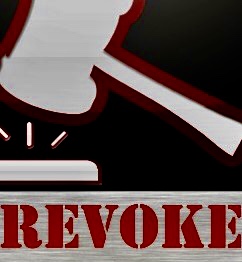
The facts of the case are long and complicated but essentially involve an application to remove a lawyer who had been appointed the trustee of a family trust that had been settled in favour of the children from the deceased’s first and second marriage.
The terms of the trust in fact waived the trustee’s obligation of even handedness, but the judge found that there was no wrongdoing on the part of the trustee and that he had in fact acted even handedly between the various residual beneficiaries.
There were a number of complaints made by beneficiaries of the trust, particularly relating to the trustee declining to pay dividends to the beneficiaries for several years, while still paying the surviving spouse yearly dividends in accordance with the settlor’s wishes.
The application was dismissed, and here is the following quote of law relating to the requirements necessary to remove a trustee in such a situation:
The Removal of a Trustee
[35] The statutory authority to remove a trustee and appoint a replacement for that trustee is set out in ss. 30 and 31 of the Trustee Act, R.S.B.C. 1996, c. 464:
30 A trustee or receiver appointed by any court may be removed and a trustee, trustees or receiver substituted in place of him or her, at any time on application to the court by any trust beneficiary who is not under legal disability, with the consent and approval of a majority in interest and number of the trust beneficiaries who are also not under legal disability.
31 If it is expedient to appoint a new trustee and it is found inexpedient, difficult or impracticable to do so without the assistance of the court, it is lawful for the court to make an order appointing a new trustee or trustees, whether there is an existing trustee or not at the time of making the order, and either in substitution for or in addition to any existing trustees.
[36] The standard of conduct to be expected of a trustee in the administration of a trust was not in dispute between the parties. It is as set out by Mr. Justice Dickson, as he then was, for the Court at 315 in Fales v. Canada Permanent Trust Co., [1977] 2 S.C.R. 302:
Traditionally, the standard of care and diligence required of a trustee in administering a trust is that of a man of ordinary prudence in managing his own affairs (Learoyd v. Whiteley [(1887), 12 App. Cas. 727.], at p. 733; Underhill’s Law of Trusts and Trustees, 12th ed., art. 49; Restatement of the Law on Trusts, 2nd ed., para. 174) and traditionally the standard has applied equally to professional and non-professional trustees. The standard has been of general application and objective though, at times, rigorous. There has been discussion of the question whether a corporation which holds itself out, expressly or impliedly, as possessing greater competence and ability than the man of ordinary prudence should not be held to a higher standard of conduct than the individual trustee. It has been said by some that a higher standard of diligence and knowledge is expected from paid trustees: Underhill’s Law of Trusts and Trustees, art. 49, relying upon obiter of Harman J. in Re Waterman’s Will Trusts; Lloyds Bank, Ltd. v. Sutton [[1952] 2 All E.R. 1054.], at p. 1055, and upon dicta found in National Trustees Co. of Australasia v. General Finance Co. of Australasia [[1905] A.C. 373 (P.C.).], a case which did not turn upon the imposition of a greater or lesser duty but upon the relief to which a corporate trustee might be entitled under the counterpart of s. 98 of the Trustee Act of British Columbia, to which I have earlier referred.
[37] I accept the principles pertaining to the removal of an estate trustee set out by Madam Justice Nolan in Haines v. Haines, 2012 ONSC 1816 at para. 10 as equally applicable to the removal of the trustee:
In Johnson v. Lanka, 2010 ONSC 4124, (2010), 103 O.R. (3d) 258 at para. 15, Pattillo J. summarized the principles that should guide the court’s discretion in deciding whether to remove estate trustees:
(1) the court will not lightly interfere with the testator’s choice of estate trustee;
(2) clear evidence of necessity is required;
(3) the court’s main consideration is the welfare of the beneficiaries; and
(4) the estate trustee’s acts or omissions must be of such a nature as to endanger the administration of the trust.
[38] In Miles v. Vince, 2014 BCCA 289 at paras. 84 – 85, Madam Justice Levine, for the Court, considered the bases upon which a court might remove a trustee:
[84] What circumstances justify the removal of a trustee? In Letterstedt v. Broers (1884), L.R. App. Cas. 371 (J.C.P.C.), the court established guidelines justifying the removal of a trustee (at 385-389):
- If the Court is satisfied that the continuance of the trustee would prevent the trusts being properly executed, the trustee might be removed. It must always be borne in mind that trustees exist for the benefit of those to whom the creator of the trust has given the trust estate.
- The acts or omissions must be such as to endanger the trust property or to show a want of honesty, or a want of proper capacity to execute the duties, or a want of reasonable fidelity.
- In exercising the delicate jurisdiction of removing trustees, the Court’s main guide must be the welfare of the beneficiaries. It is not possible to lay down any more definite rule in a matter that is so “essentially dependent on details often of great nicety.” The Court must proceed to look carefully into the circumstances of the case.
- Where a trustee is asked to resign, and if it appears clear that the continuance of the trustee would be detrimental to the execution of the trusts, even if for no other reason than that human infirmity would prevent those beneficially interested, or those who act for them, from working in harmony with the trustee, and if there is no reason to the contrary from the intentions of the framer of the trust to give this trustee a benefit or otherwise, the trustee is always advised by his own counsel to resign.
- The lack of jurisprudence in respect of the removal of a trustee reflects that a trustee when asked to do so, will resign.
- If, without any reasonable ground, the trustee refuses to do so the court might think it proper to remove him.
- Friction or hostility between trustees and the beneficiary is not of itself a reason for the removal of the trustees. But where the hostility is grounded on the mode in which the trust has been administered, where it has been caused wholly or partially by substantial overcharges against the trust estate, it is not to be disregarded.
[85] This Court adopted the principles from Letterstedt in Conroy v. Stokes, [1952] 4 D.L.R. 124 at 126-127 (B.C.C.A.) (quoted by the chambers judge at para. 48). In that case, the Court quoted from Lord Blackburn’s judgment as follows:
There Lord Blackburn at p. 385 said:
“It is not disputed that there is a jurisdiction ‘in cases requiring such a remedy,’ as is said in Story’s Equity Jurisprudence, s. 1287, but there is very little to be found to guide us in saying what are the cases requiring such a remedy; so little that their Lordships are compelled to have recourse to general principles.
“Story says, s. 1289, ‘But in cases of positive misconduct Courts of Equity have no difficulty in interposing to remove trustees who have abused their trust; it is not indeed every mistake or neglect of duty, or inaccuracy of conduct of trustees, which will induce Courts of Equity to adopt such a course. But the acts or omissions must be such as to endanger the trust property or to shew a want of honesty, or a want of proper capacity to execute the duties, or a want of reasonable fidelity.’” (Italics per Levine J.A.) [in Conroy][v. Stokes, [1952] 4 D.L.R. 124]
Again at p. 387: “In exercising so delicate a jurisdiction as that of removing trustees, their Lordships do not venture to lay down any general rule beyond the very broad principle above enunciated, that their main guide must be the welfare of the beneficiaries.”
And again at p. 389: “It is quite true that friction or hostility between trustees and the immediate possessor of the trust estate is not of itself a reason for the removal of the trustees. But where the hostility is grounded on the mode in which the trust has been administered, where it has been caused wholly or partially by substantial overcharges against the trust estate, it is certainly not to be disregarded.
[39] It is clear from the authorities that while actual dishonesty, lack of proper capacity to execute his or her duties, or lack of reasonable fidelity are all bases for removing a trustee (Re Commonwealth Investors Syndicate Ltd. (1986), 69 B.C.L.R. 346 at 356, [1986] B.C.J. No. 3112 (S.C.)), even the lesser basis of a trustee’s ability to act impartially may suffice to justify the removal of a trustee (Re Shaw Co. Ltd. (1922), 68 D.L.R. 616, [1922] S.J. No. 89 (K.B)).
[40] But the removal of a trustee should not be lightly entertained. In Radford v. Radford Estate (2008), 43 E.T.R. (3d) 74, [2008] O.J. No. 3526, Mr. Justice Quinn discussed a number of other considerations to apply when considering an application for the removal of a trustee at paras. 102 – 107:
Removal must be the only course to follow
[102] Removal of an estate trustee should only occur “on the clearest of evidence that there is no other course to follow”: see Crawford v. Jardine, [1997] O.J. No. 5041 (Ont. Gen. Div.)) at para. 18, citing Tempest, Re (1866), 1 Ch. App. 485 (Eng. C.A.) and Owen Family Trust, Re (1989), 33 E.T.R. 213 at 215 (B.C.S.C.).
Removal to be guided by welfare of beneficiaries
[103] In deciding whether to remove an estate trustee, “the court’s main guide should be the welfare of the beneficiaries”: see Crawford v. Jardine, ibid, citing Letterstedt v. Broers (1884), (1883-84) L.R. 9 App. Cas. 371 (South Africa P.C.) at 385-387 and Anderson, Re (1928), 35 O.W.N. 7 at 8 (Ont. H.C.).
Non-removal must likely prevent proper execution of trust
[104] “It is not every mistake or neglect of duty on the part of the trustees which will lead to their removal. It must be shown by the applicant that the non-removal of the trustee will likely prevent the trust from being properly executed”: see Crawford v. Jardine, ibid.
[105] “[I]t is not indeed every mistake or neglect of duty, or inaccuracy of conduct of trustees, which will induce Courts of Equity to [remove trustees]. But the acts or omissions must be such as to endanger the trust property or to shew a want of honesty or a want of proper capacity to execute the duties, or a want of reasonable fidelity”: see Letterstedt v. Broers, ibid, quoting s. 1289 of Story’s Equity Jurisprudence.
Removal not intended to punish past misconduct
[106] “The authorities are, I believe, consistent in placing the emphasis on the future administration of the estate, and the risks to which it will be exposed if the trustee remains in office. The question is whether the trust estate is likely to be administered properly in accordance with the fiduciary duties of the trustee and with due regard to the interests and welfare of the beneficiaries. The sanction of removal is intended not to punish trustees for past misconduct but rather to protect the assets of the trust and the interests of the beneficiaries”: see St. Joseph’s Health Centre v. Dzwiekowski, supra, at para. 28.
[107] But, “past misconduct that is likely to continue will often be sufficient to justify removal …”: see St. Joseph’s Health Centre v. Dzwiekowski, supra, at para. 29.
[111] I find that the petitioners have failed to demonstrate any breach of duty, misconduct, or lack of impartially or fidelity by Mr. Thompson. I further find that throughout the 19.5 years that the Trust has been in existence, the three Beneficiaries of the Trust have been treated in an equal and impartial manner by Mr. Thompson, notwithstanding the fact that the even hand rule was expressly waived by the Trust deed.
[112] I find that Mr. Thompson has not failed to perform his duties as a trustee due to some sense of loyalty or overarching obligation to Janet Parker. The evidence of Mr. Thompson, which is supported by the evidence of Mr. Omland, and Janet and Colin Parker, satisfies me that Mr. Thompson carried out his duties as trustee effectively, fairly, impartially, and successfully and that his work as a trustee has resulted in a thriving Dealership, and has been for the benefit of all three Beneficiaries.
[113] I therefore dismiss the petition.




